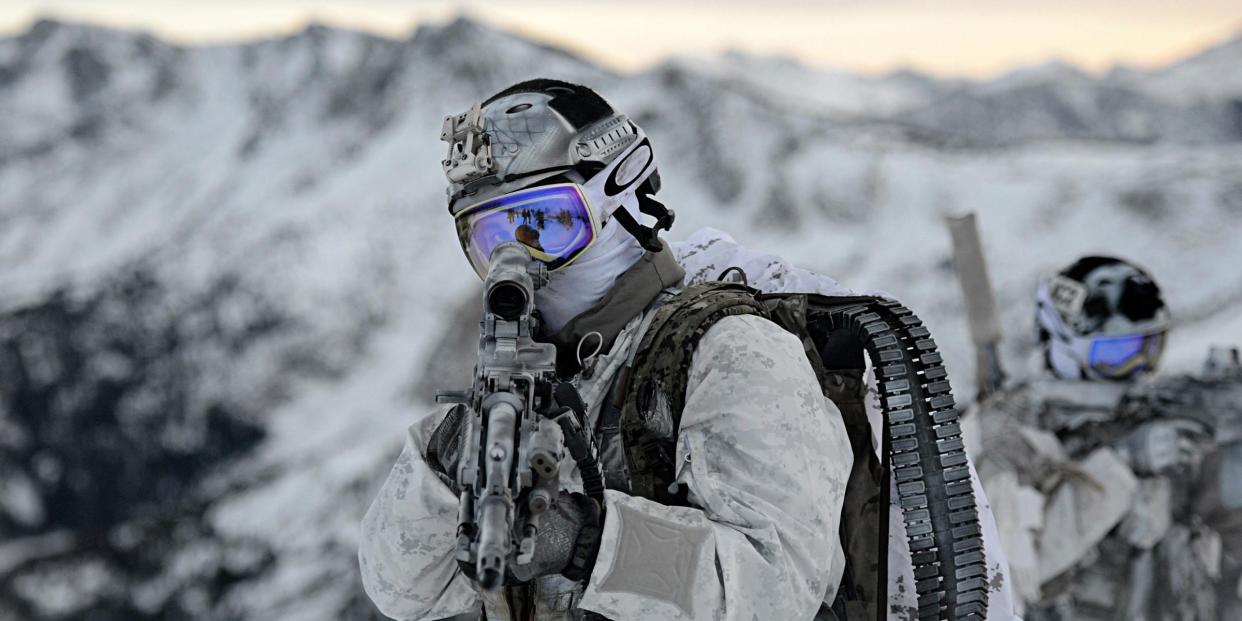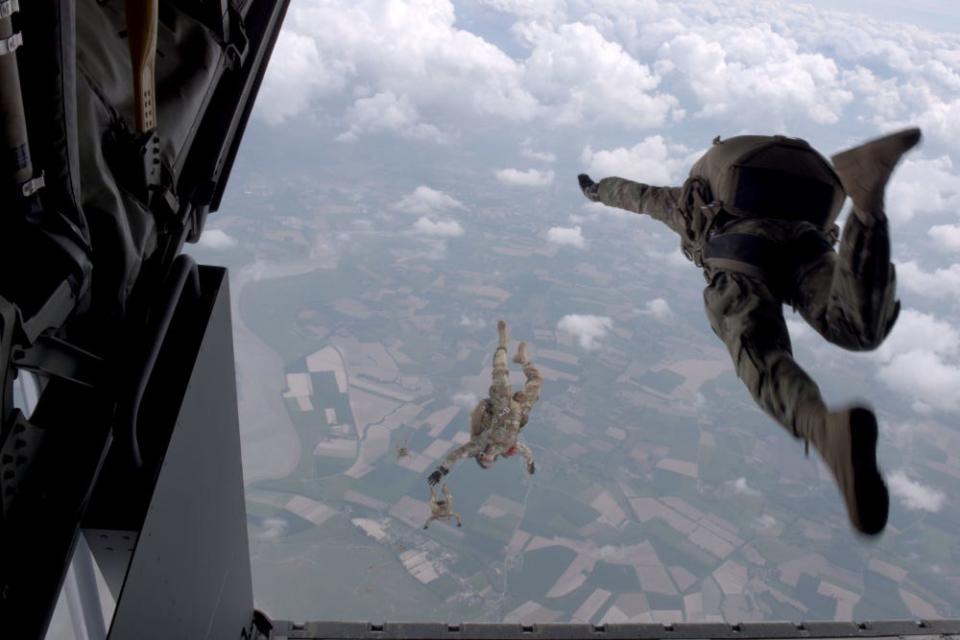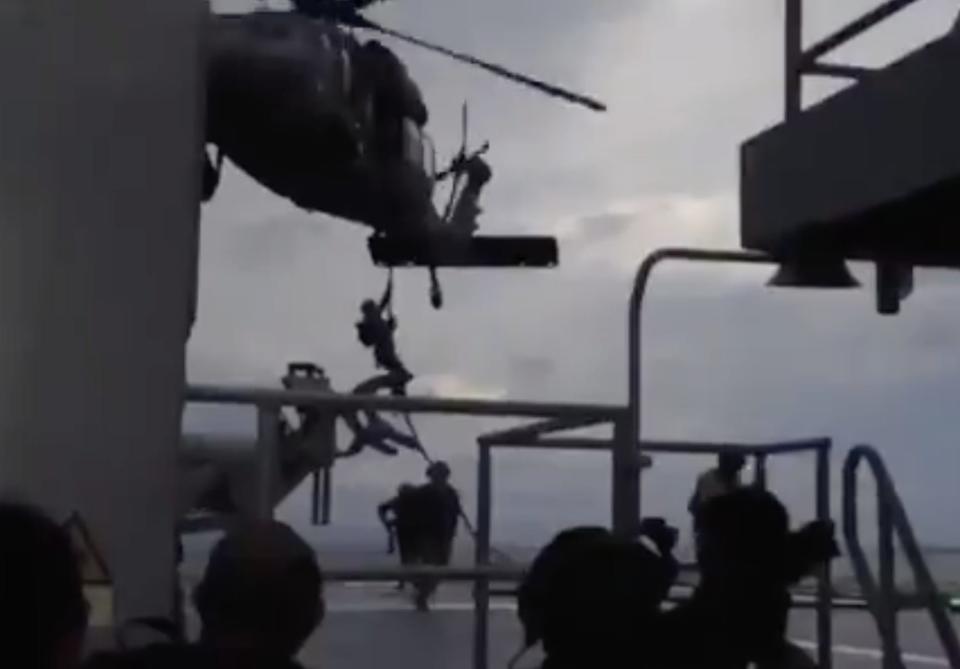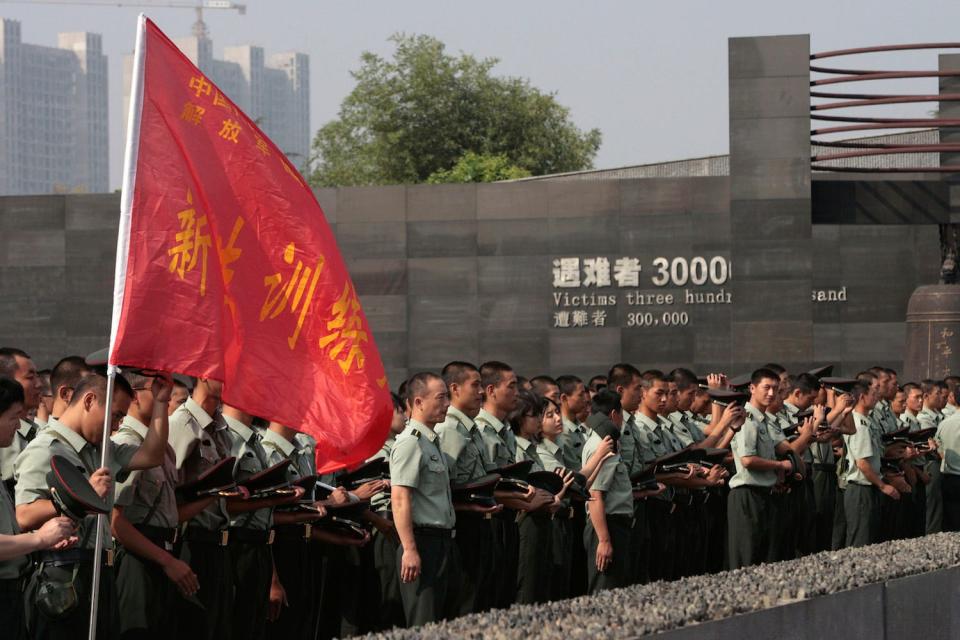How China's special forces stack up against the US's special operators

Special-operations forces have become the top option for policymakers because they're highly capable and can operate with a small footprint.
China's current special-operations units are a relatively recent addition to the People's Liberation Army, and their roles are distinct from their US counterparts.
Over the last two decades, special-operations forces have become the go-to choice for policymakers and military leaders around the world.
The successes of US and coalition special-operations units in the Global War on Terror (GWOT) and in Syria against ISIS have showcased the importance and utility of small teams of highly trained troops.
While the US and its allies have been fighting in the Middle East, the Chinese military has been paying close attention, especially to US special operations. As a result, the People's Liberation Army (PLA) is increasingly investing resources in its own special-operations forces.
So with everyone gearing up for great power competition, how do Chinese special operations measure up against the US's and what are the biggest difference between the two?
US special operators

US special-operations units can be divided into unofficial tiers.
Delta Force and SEAL Team 6 would be at the top (Tier 1), followed by the 75th Ranger Regiment, Night Stalkers, MARSOC, and SEAL and Boat Teams (Tier 2), and then the Special Forces Groups (Tier 3). Air Commandos are harder to categorize since they most often augment other units rather than deploy as teams.
It's important to note that these tiers have more to do with mission sets and funding than with the quality of the troops.
For example, SEAL Team 6 is part of the National Mission Force (the Pentagon's first responders, in layman's terms) and has far more money to spend and resources to use than a "vanilla" SEAL team, but both are manned by SEALs.
Chinese special operators

Irregular warfare and special operations have been part of Chinese military culture since the time of Sun Tzu, whose writings highlighted the value of specialized individuals and units in warfare.
However, modern Chinese special operations are fairly new. The first unit, the Special Reconnaissance Group, was established in 1988. In the late 1990s, as part of PLA's modernization, seven Special Operations Groups of between 1,000 to 2,000 men were created.
Now there is one special-operations brigade-size unit in each of the five theater commands
, which are a rough equivalent of the US's combatant commands.
In addition, there are numerous smaller special-operations units of varying size in the other branches. The Chinese Navy, Air Force, and Rocket Force (the branch responsible for China's nuclear and conventional missiles) each have a dedicated special-operations unit.
The Navy's Jiaolong (Sea Dragons) is probably the most famous Chinese special-operations unit after it successfully recaptured a ship from pirates in the Gulf of Aden and assisted the evacuation of civilians from war-torn Yemen, which became the subject of a Chinese propaganda movie.
All in all, China has between 20,000 and 40,000 special-operations troops of varying quality.
Crucially, Chinese special-operations units have more than doubled in number in the last two decades, showing that Chinese leaders are paying close attention to the high-reward, low-cost characteristics of special-operations units.
Both special but not the same

Since the early 2000s, the PLA has undergone a drastic modernization and professionalization process, transitioning from a mainly conscript force to a smaller, mostly volunteer military, though conscription remains as a policy.
The new force's main aim is to fight short wars against regional adversaries while having a technological advantage.
Chinese special-operations units, and the PLA as a whole, have gained from that modernization and learned from the example provided by Western special-operations units over the past 60 years, but Chinese forces are still untested in combat.
On the other hand, US special-operations units have amassed an astounding level of combat experience in the last two decades. It's not uncommon to have operators with double-digit combat deployments and hundreds of real-world operations under their belts.
Chinese special-operations units are also regionally focused and lack a centralized command like the US Special Operations Command (SOCOM). This could limit their effectiveness and hurt interoperability.

Moreover, Chinese special-operations units lack the dedicated aviation and maritime assets that American commandos have, namely the 160th Special Operations Aviation Regiment, Special Boat Teams, SEAL Delivery Vehicle Teams, and the Air Force's Special Operations Squadrons.
Without specialized insertion platforms, the utility of Chinese commandos is limited and their geographic scope localized
. However, according to the US Army's Foreign Military Studies Office (FMSO), the PLA is establishing aviation brigades that might resolve some of these asset shortcomings.
Additionally, there is a difference in mission sets.
Chinese special-operations units focus on direct action, special reconnaissance, and counterterrorism. Unlike US commandos, they don't conduct unconventional warfare, foreign internal defense, counterinsurgency, hostage rescue, civil affairs, and psychological operations.
In a nutshell, in terms of mission sets, Chinese commandos are closer to World War II special-operations units than to modern US special operations. It's not that they aren't capable, but their scope is more limited, a reflection of the PLA's strategic priorities.
People first

But perhaps the biggest and most important difference is the people.
"Humans are more important than hardware," is one of the five US special-operations "Truths." Western special operators take pride in their independence and out-of-the-box thinking, which is encouraged if not expected by their leaders.
Units like Delta Force, the SEAL Teams, the Special Forces Groups, and allied units like the Special Air Service (SAS) excel because of their noncommissioned officers. When planning operations, it's these NCOs who come up with the ideas and approach. Ironically, the British SAS have titled this enlisted-driven process "the Chinese Parliament."
Conversely, elements of Chinese military culture, in particular the use of conscripts as well as differing views on unit cohesion, pose a significant barrier to small-team independence.
Allegiance to and scrutiny by the Communist Party complicates things further and adds another level of bureaucracy.
China is used to stealing and copying military technology and concepts, which is believed to be behind Beijing's advances in fighter jets and other weapons. But when it comes to special-operations units, these cultural aspects aren't easy to mimic.
Stavros Atlamazoglou is a defense journalist specializing in special operations, a Hellenic Army veteran (National Service with the 575th Marine Battalion and Army HQ), and a Johns Hopkins University graduate.
Read the original article on Business Insider

